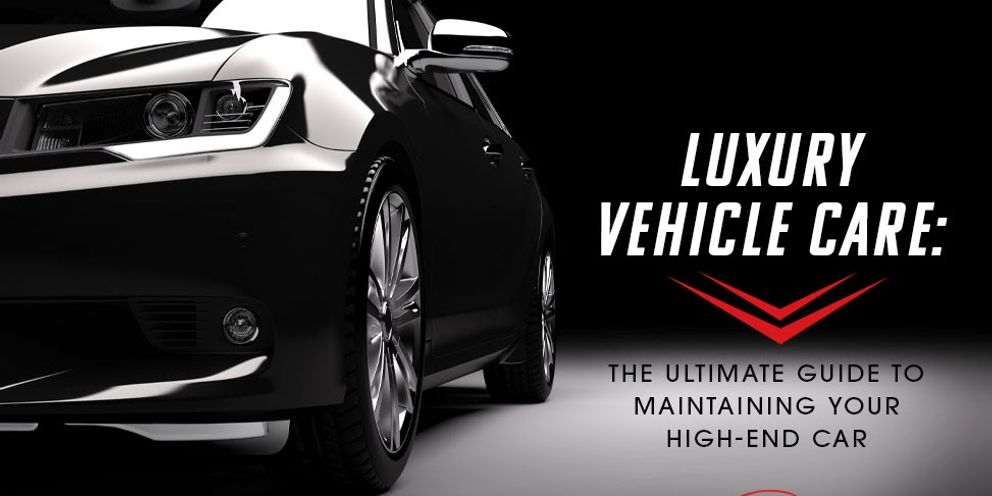
Luxury Vehicle Care: The Ultimate Guide to Maintaining Your High-End Car
If you own a luxury car, chances are you put a lot of thought and care into your purchase. Your car is a vital investment, even if you primarily use it for special occasions and not for everyday commutes. However, your investment doesn’t end the day you drive it home from the dealership. Keeping your car in top condition helps maintain its value in case you ever decide to sell it. If it stays in pristine condition, you might even use it for 20 years or more.
Protect your luxury vehicle by putting the time and effort into taking care of it with the right tools and the best car covers. Although many basic maintenance procedures are the same as those of regular cars, manual transmissions, leather seats, and other unique aspects of luxury cars have special considerations.
Basic Engine and Transmission Care
Your luxury car’s basic maintenance needs are the same as any other automobile. Regular inspections by a professional are the best way to prevent any problems ranging from worn-out brake pads to radiator leaks. It’s possible to do some basic care, including oil changes, by yourself at home. However, experts recommend getting your car inspected at the same time you get your oil changed or every 3-6 months. Depending on the climate where you live, you may be required to get an inspection once a year.
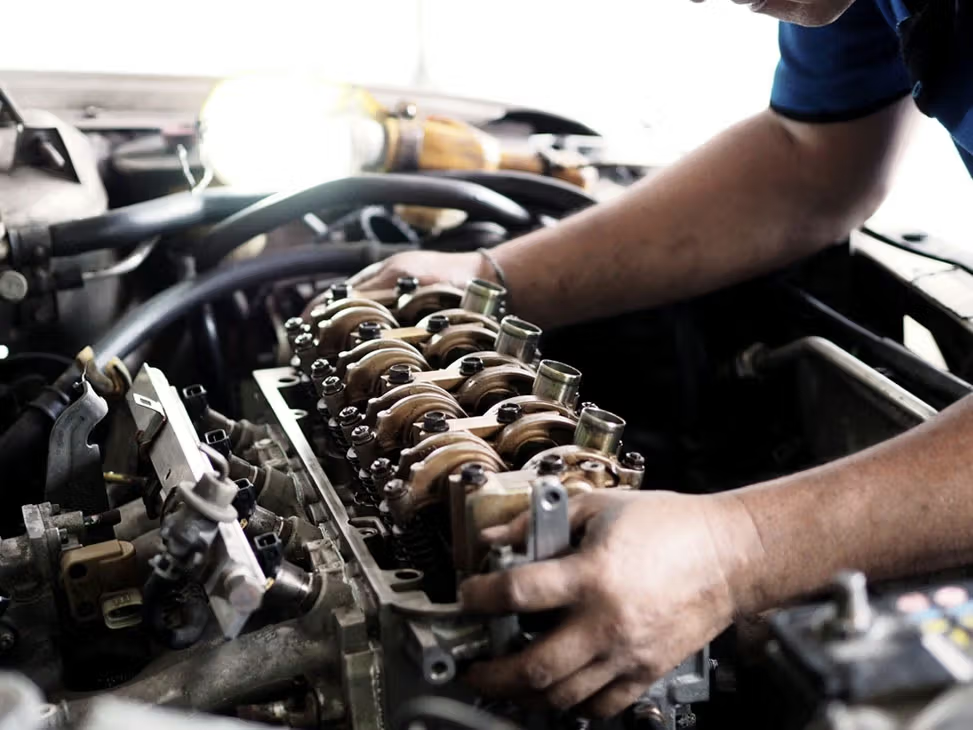
Manual transmissions also need their fluid replaced every 30,000 to 60,000 miles. To avoid even the slightest hiccup with your car’s performance, consider getting your manual transmission inspected and flushed at the lower end of this mileage range.
Checking the Tires
Although you can use a range of different tire brands on your luxury vehicle, aim for high-end tires to better protect your investment. Ask your dealership about recommended tires, and don’t stray too far from their recommendations.
No matter what tires you end up with, inspect and put air in them periodically. The tread depth on your tires should never fall below 2/32” of an inch, and you can monitor the tread depth yourself with the penny test. Check your tires yourself at least once a month and more frequently if you’ve had any issues with low pressure or punctures in the past month. Rotate your tires every 3,000-5,000 miles, just like you would for any car. It’s best to take your car to a professional for this task, especially since they can inspect your hubcaps and wheels for other maintenance needs while they work.

Maintaining the Seats
Best practices for maintaining your seats vary depending on the material. Vinyl and faux leather are the easiest to clean with plain water, and tougher sticky spots usually come off with mild dish soap and water. Nylon and polyester may require special fabric cleaners if specified by the vehicle’s manufacturer.
Genuine leather is highly durable but requires extra care while cleaning. Look for a specialized leather seat cleaner and follow the instructions carefully. Most require you to apply it and wipe it off immediately to avoid damage or unwanted odors. Apply a leather conditioner after cleaning to ensure the upholstery remains supple and is less prone to cracks. If you notice any damage to the seams or the fabric, take it in for repair immediately. Ignoring it or covering it with a seat cover for too long will only allow it to get worse and could eventually result in more serious damage to the padding underneath.
Cleaning the Trim and Floor Mats
If you drive the car at least once a week, try to vacuum it weekly. Small amounts of crumbs and dirt are still enough to attract bugs and rodents, which can cause serious problems later. Even if you drive the car infrequently, give the floor areas a good inspection once every few weeks to ensure nothing has invaded.
Remove the floor mats and clean them thoroughly at least once a month or more frequently if they’ve gotten dirty. Vacuum the floor under the mats as well. Get a specialized car cleaner to clean the interior trim, following the instructions carefully for a proper shine. Use a clean, new microfiber cloth to wipe down the interior afterward to eliminate any streaks. Check the cup holders, glove compartment, dashboard, and other small compartments as well.
The steering wheel is difficult to keep clean and free of wear and tear since it gets used every time you drive. If you’re not using a steering wheel cover, wipe it down and clean any grime out of the crevices at least twice a month or more frequently if you drive the car every day.
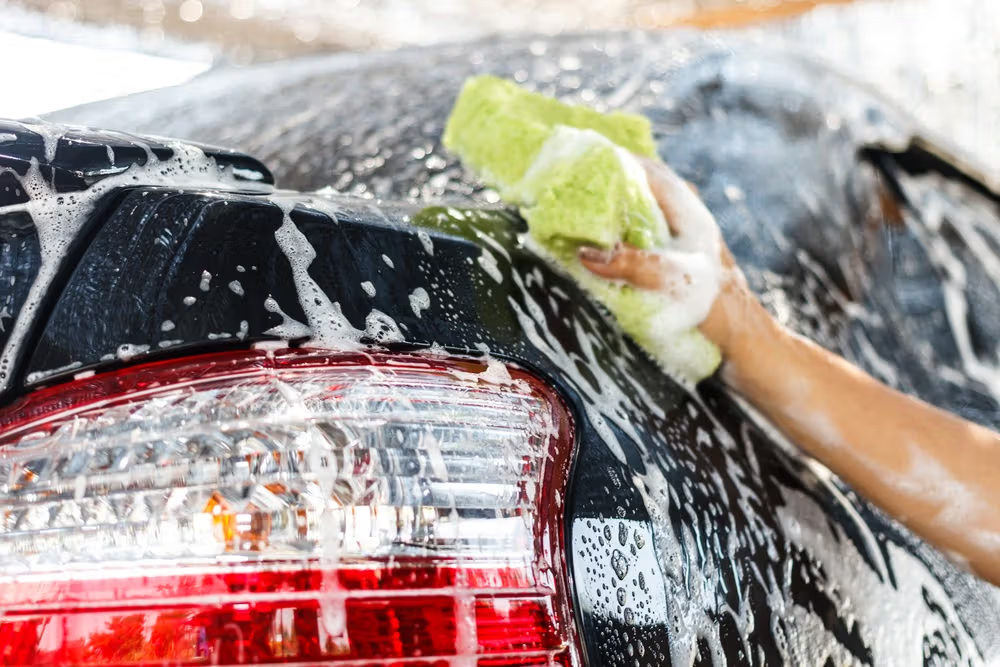
Washing the Exterior
Although luxury cars are designed with sleek, high-quality exteriors, there are still minor details that require special attention. Failure to properly clean and protect problem areas could cause damage to paint or metal. Detailing starts with a thorough wash with water, car wash soap, and a soft car washing mitt. Wash and rinse the car gently, starting at the top and working your way down. Soak dirty areas a little longer instead of resorting to a brush to scrub them, as even soft brushes can create tiny scratches in the paint. After the car has been thoroughly rinsed, dry it with a chamois or a microfiber towel.
Use a specialized wheel brush or cleaning mitt to get grime off the wheels, which are especially susceptible to dirt and debris because of their proximity to the road. You can clean the inside of the wheel wells with a long-handled brush and degreaser if the wells are made of metal. However, if the wheel wells are covered in plastic, get a degreaser that’s safe to use on plastic. Give your car a detailed visual inspection once you’ve finished washing and drying it to make sure you didn’t miss any spots. Remember that washing the car is essential to successfully detailing the exterior, and the more effort you put into doing it properly, the better your results will be.
Polishing, Waxing, and Sealants
Waxing and polishing should only be done after the exterior of the car has been thoroughly cleaned. Ideally, this should happen the same day as washing the exterior, to prevent any fresh dust from building up. At the very latest, polish and wax your car the day after washing it and before driving it again to ensure you don’t accidentally scratch it by rubbing debris into the paint. Even if you’ve washed it the same day, you’ll want to go over it with a clay bar to pick up any bits of dust that may not have washed off.
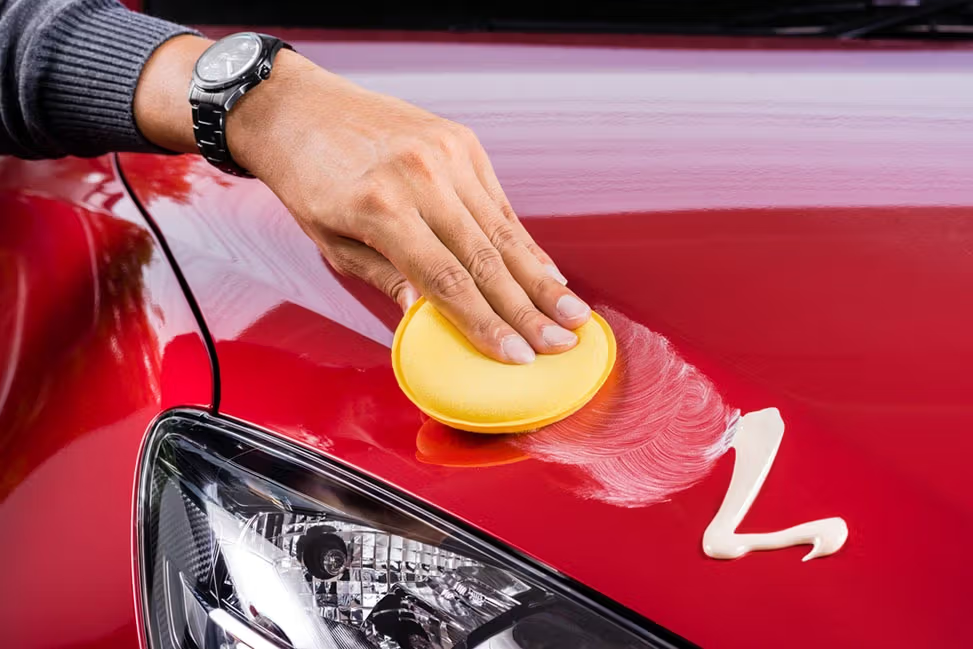
Polish is only really necessary for obscuring and protecting scratched areas. The right polish partly depends on the size and depth of the scratch. For deep scratches or anything too large for regular polish to cover, you’ll want to schedule an appointment for repairs as soon as possible to prevent rust and further damage. Car polish does nothing to protect the paint job, so pick up a specialized wax in addition to polish. The best wax for your type of car may vary, depending on the exact type of paint and sealant used, but liquid wax is usually recommended because it lasts the longest and doesn’t lose its luster quickly.
Wax your car by working in small sections and rubbing with a back-and-forth motion instead of a circular motion. Let the wax haze or cloud over, unless it is a non-hazing wax, before buffing it to a high shine. Wax the rear of the mirrors, license plates, and headlights to make everything easier to clean the next time you wash your car. Also, remember that sealants and other long-term coatings are best left to the professionals. Your car’s needs for sealants will vary, depending on the type of car and even your local climate, so consult with your dealership to determine the best options for you.
Choosing a Car Cover
A car cover is essential for outdoor parking, even if you live somewhere with a mild climate. Luxury car paint is susceptible to UV rays, just like all paint, and it fades over time if not appropriately protected. Plus, water, ice, and debris can all build up, causing moisture damage. Even if you’re parked indoors, dust, dirt, and water can add to your maintenance worries. Although car owners often talk about the best indoor car covers for classic cars, even newer luxury vehicles can benefit from an excellent indoor cover.
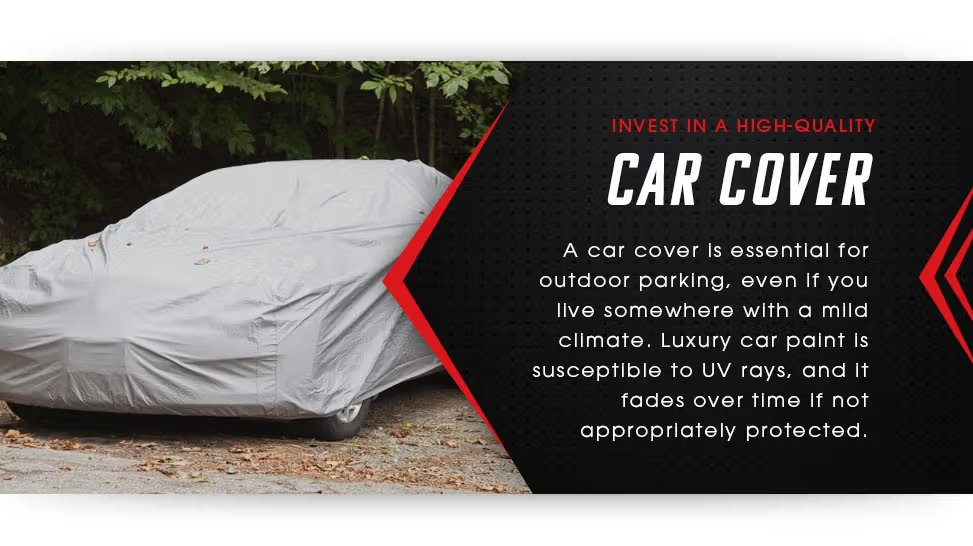
Shop Our Entire Selection Of Car Covers
Investing in a high-quality car cover can save you significant time, energy, and even money. Get a UV- and weather-resistant cover for outdoor use or a specialized cover for indoor use, and then choose between a semi-custom and fully customized fit. Although you can technically use outdoor covers indoors, indoor-only covers have a softer lining and won’t wear on your car’s wax or polish as much.
Winterizing and Long-Term Storage
Some luxury vehicles, especially convertibles, mostly come out in the summer months. If you primarily use your luxury car in the summer, you may want to formally prepare it for long-term winter storage to prevent additional maintenance problems.
Start by doing a full cleaning, waxing, and inspection, just like you would periodically during regular use. If you store the car for more than a month, put a fuel stabilizer in the gas tank to keep gum from building up inside. In winter, cover up the exhaust pipe to prevent rodents from crawling inside, but leave yourself a reminder to remove the cover.
If you are storing the car for more than two months, be aware that the tires may develop permanent flat spots. To prevent these, either take the tires off and put the car on blocks or drive the car briefly at least once per week. Also, consider getting a battery tender, which keeps the car’s battery charged to prevent having to jump-start it later. Although it sounds counter-intuitive, don’t leave the parking brake on, as these brake pads can fuse into place if left in the same position for too long.
Preventing Problems
If you occasionally have guests or family members in the car, it’s best to make sure everyone knows the basic dos and don’ts of riding in it. Let people know in advance if they need to avoid bringing food or drink into the car or if they need to kick snow or dirt off their shoes before climbing in. Consider upgrading your floor mats or purchasing seat covers to prevent wear and tear from frequent passengers. Although most guests will be considerate of your car if you let them know you’re trying to keep it clean, accidents can still happen.
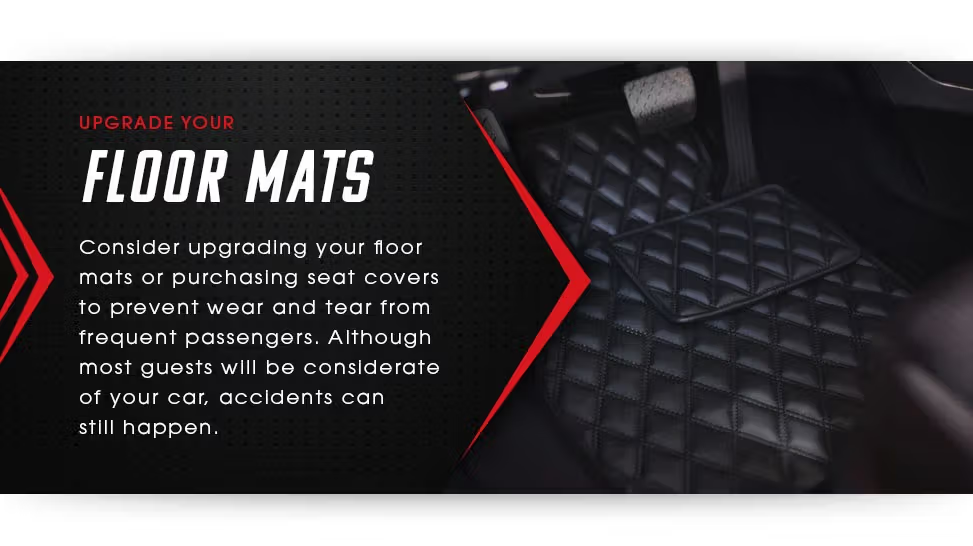
Take care when parking your vehicle under trees. Although trees provide an excellent shady spot, nuts that fall from the tree can cause minor damage, and resinous tree sap can degrade paint and is challenging to remove. If sun exposure is a concern, either be careful to check the tree for fruits and nuts before parking there or avoid the tree entirely and use a sunshade that fits under your windshield.
Protecting Your Investment
Whether you’re experienced with luxury cars or are buying one for the first time, your maintenance skills and knowledge are essential to protecting it through the years. They are similar to standard entry-level vehicles on the inside, but maintaining their high value requires serious attention to detail on the outside. Create a maintenance routine and build it into your monthly and weekly schedule to ensure essential tasks get done. Although the timing of oil changes and tire rotations can vary, depending on how frequently you drive the car, do most tasks like vacuuming and regularly detailing unless the car is in long-term storage.
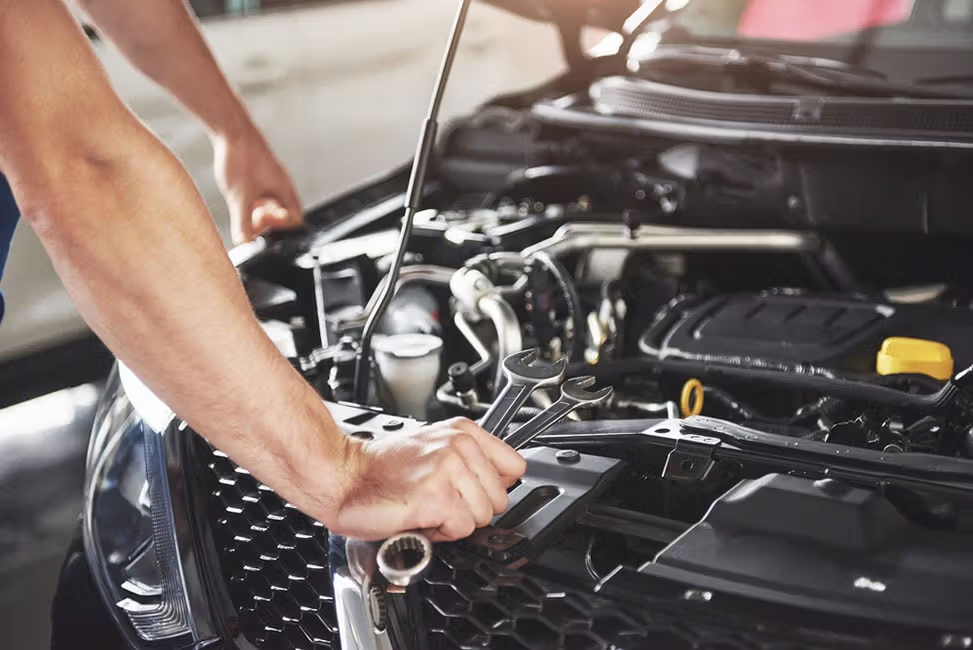
It requires some research to make sure you get the right polish, degreaser, leather cleaner, and other essentials for your car. You’ll also need to get the right car cover, even if you plan on storing it indoors. Shop our entire selection of car covers to find the perfect semi-custom or custom cover for your budget and climate to cut down on wear and tear on your luxury vehicle.
Updated